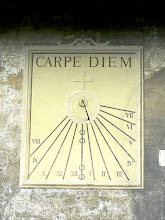CATALONIA
.jpg)
Foto : RAMON BERENGUER III, THE GREAT, COUNT OF BARCELONA
____________________________________________________________
CATALONIA
=========
kătəlōˈnēə,
Catalan: Catalunya Spanish: Cataluña
Autonomous region (pop.9.165,638), NE Spain,
stretching from the Pyrenees at the French border southward along the Mediterranean Sea.
LAND and ECONOMY
Catalonia comprises four provinces, named after their capitals: Barcelona, Girona, Lleida, and Tarragona.
Barcelona, the historic capital, contains more than a third of the region's residents.
Catalan and Spanish have been the official languages of Catalonia since 1978, which has led to a considerable revival of Catalan.
Mostly hilly, with pine-covered mountains, it also has some highly fertile plains. Cereals, olives, and grapes are grown, and one third of the wines of Spain are produced there.
The beautiful 240-mi (386-km) seacoast has fine harbors, excellent fisheries, and an active tourist trade.
The Ebro (Ebre, in Catalan), Segre, and Cinca rivers furnish hydroelectric power for the industries in Barcelona and Girona provs.; chief products are textiles, chemicals, automobiles, airplanes, locomotives, and foundry and other metal items. The service sector has grown rapidly.
HISTORY
Trade has been active along the coast since Greek and Roman times.
The history of medieval Catalonia is that of the Counts of Barcelona.
They emerged in the nineteenh century (9th cent) as the chief lords in the Hispanic Mark founded by Charlemagne.
In 1137,through marriage(see Raymond Berengar IV), Catalonia united with Aragon in a Catalan-Aragonese Confederation. Ramon Berenguer IV married Petronela of Aragon and became King of Aragon.
Nevertheless Catalonia preserved its own Laws, Courts and language. And so did Aragon.
ART AND CULTURE
Catalan art and Catalan literature flourished in the Middle Ages.
In the cities, notably Barcelona, the burgher and merchant classes grew very powerful.
Catalan traders rivaled those of Genoa and Venice, and their maritime code was widely used in the 14th cent.
They, and adventurers like Roger de Flor, were largely responsible for the expansion in the Mediterranean of the house of Aragón (see Aragón, house of).
Catalonia failed in its rebellion (1461–72) against John II, and after the union with Castile, and the first bubonic plague, Catalonia declined.
The centralizing policy of the Spanish kings, the shifting of trade routes with the consequent loss of commercial income, pirate attacks, and recurring plagues and famines were all major factors.
Agitation for autonomy was always strong.
In the Thirty Years War (1618–48), Catalonia rose against Philip IV and in the War of the Spanish Succession it sided with Archduke Charles of Austria against Philip V of France.
Who in reprisal deprived Catalonia of its own Governmental Organs.
In the late 19th and early 20th cent. it was a center of socialist and anarchist strength.
In 1931 the Catalans established a separate government, first under Francesc Macià, then under Lluis Companys, which in 1932 won autonomy from the Spanish Cortes.
A revolution (1934) for complete independence failed, but in 1936 autonomy was restored.
In the civil war of 1936–39, Loyalist Catalonia sided with the Republic and suffered heavily for its opposition to Franco.
Barcelona was the Loyalist capital from Oct., 1936 to Jan., 1939.
Catalonia fell to Franco in Jan 26 1939.
Under the Franco dictatorship, the use of Catalan was banned in public life.
After Franco´s death democracy was restored and then could
Catalonia elect its first Parliament as an Atonomous region in 1980.
And by the mid-1990s Catalan nationalists had become a force in both Catalonian and Spanish politics.
Increased autonomy for Catalonia and recognition of the region as a "nation" within Spain was approved in 2006.
====================
Copyright© 2007 Columbia University Press.
Used with the permission of Columbia University Press.
All rights reserved.
Sixth Edition. Publisher: Columbia University Press. Place of Publication: New York. Publication Year: 2007.
Labels: Ee


0 Comments:
Post a Comment
<< Home